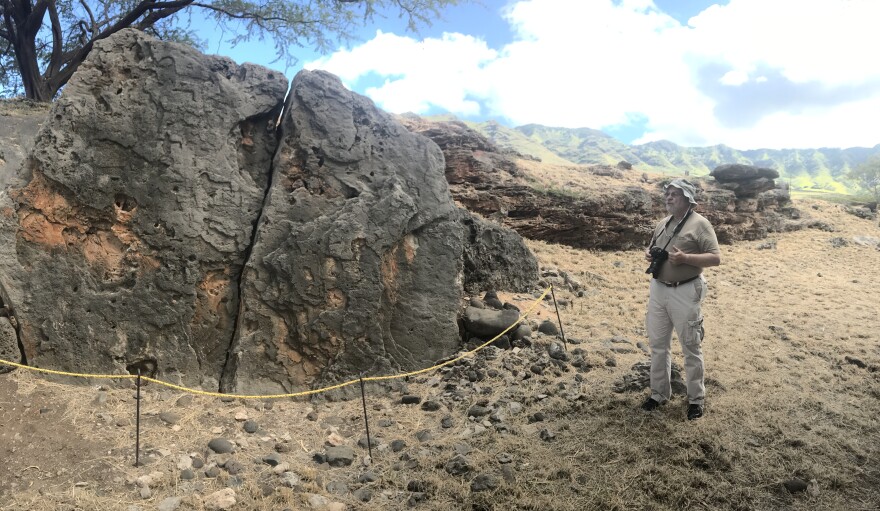Cultural access to military training grounds in M?kua Valley began in a court battle between the military and the native Hawaiian community. Nearly two decades later, the cultural access program has begun to foster a transformation in mutual understanding and relationship building. HPR’s Ku?uwehi Hiraishi reports.
For the past 16 years, the U.S. Army has been opening the gates to its M?kua Military Reservation for cultural access.

Today, the group being hosted is made up mostly of first year medical students from the University of Hawai?i at M?noa?s John A. Burns School of Medicine. Dr. Martina Kamaka has been bringing her students to M?kua for over a decade.

“I think M?kua is very important because of that struggle over land and sovereignty,” says Dr. Kamaka, “And so we want them to understand what that history was. What the importance of this place was.”
The Army began using M?kua Valley for live-fire training in 1942. Colonel Steve Dawson commands the U.S. Army Garrison Hawai?i.

“We’re much more aware of the culture and the environments today than we were when we first started training here,” says Col. Dawson, “Training and readiness is paramount. It’s the number one priority for the United States Army is to maintain readiness so that we can defend the nation. But we have found that we can train responsibly. That we can be good stewards of the natural resources, of the cultural resources.”

Richard Davis heads up the Cultural Resources Program for the Army.
“We have over 100 archaeological sites many of them dating to the traditional Hawaiian period,” says Davis.
These include temples, petroglyphs, and farm terraces. Students give offerings of chants, read old stories about M?kua, and visit some of the archaeological sites. M?kua is also home to nearly 50 endangered plants and animals.

A 2001 court settlement between the U.S. Army and a native Hawaiian group called M?lama M?kua halted live-fire training and allowed the group to access the valley twice a month. Lynette Cruz took part in securing that access, and says the hard-liner activist approach has since evolved.
“You just get to a point where being in your face obviously is kind of passé. That’s not going to work anymore,” says Cruz, “But what we really wanted to do and what we want to do across the board is to form a relationship with those people we have been in conflict with but also to help them form a relationship with place.”

To do so, Cruz has enlisted the help of young M??ili-native Ileana Ruelas, who guides the cultural access tour by sharing a wealth of knowledge she gathered through research of place names, legends, and transcripts of first hand observations by native Hawaiians who once lived in M?kua Valley.
“So when we bring back those voices, and we hear those voices by reading their transcripts, then we see with their eyes,” says Ruelas, “And hopefully, it begins to wet our appetite.”
Appetite for knowledge and for a deeper pilina or connection to place.
“I don’t know what that looks like in this context,” says Ruelas, “But I think when you bring that space and people are able to build pilina with the voices, with the vision, with the ??ina, and see themselves in that space. Then I think that that’s transformational.”




